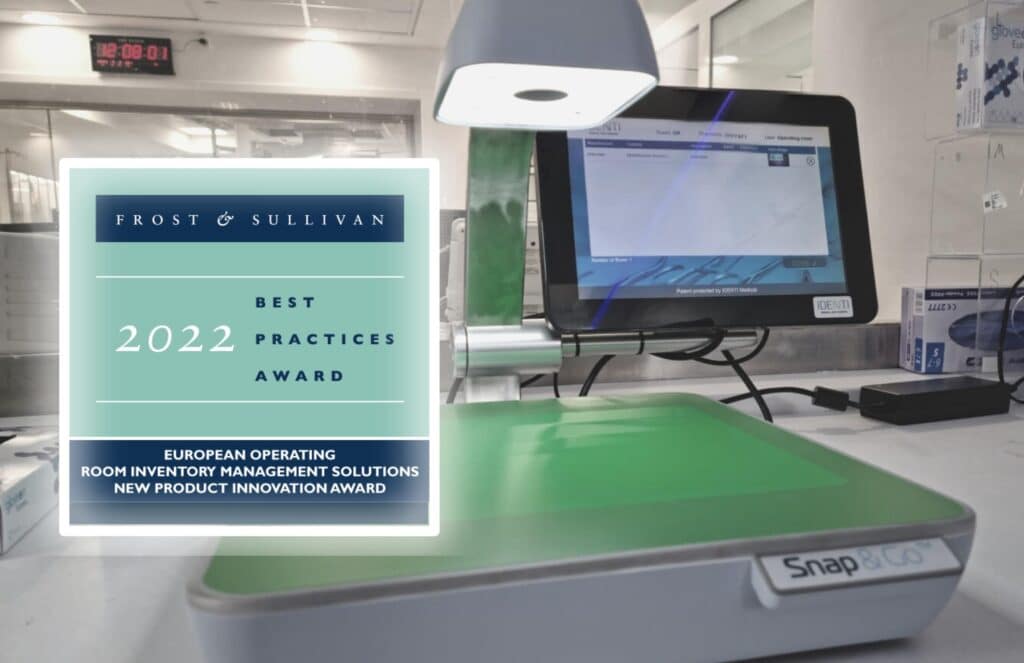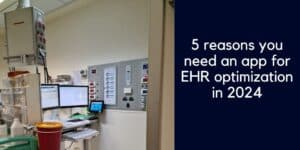What’s inside:
Barcode scanners have traditionally relied upon an up-to-date Item Master to identify items and record complete data. But POU data capture is about to radically change!
In this article find out:
- The connection between Item Master maintenance and POU data capture
- How data capture has been reinvented using computer vision technology
- What usage documentation looks like in the digital age
- The positive impact of full itemization
Barcode scanners, the most common POU data capture tool, are reliant upon finding a match for each scanned item in the Item Master, in order to process the data. So, if the batch number has altered since the last entry, or a non-stock item is scanned, the system draws a blank.
The Item Master is a crucial element of efficient data capture at the point of care but maintaining it, so that it keeps up with the full range of inventory being used in surgical suites, is easier said than done.
Maintaining the Item Master
Is your organization chasing its tail to keep the Item Master up to date? It’s a never-ending task, especially these days with an increasing number of additional suppliers, substitute products and ever-changing batch numbers.
The trouble is that all hospital systems rely upon the continued maintenance of the hospital’s ‘source of truth’ in order to accurately process product data. When items are not listed, or have errors or omissions, barcode scanning fails or does not achieve full documentation.
It’s a particular issue in surgical areas, where time is of the essence, and nurses have little time to manually key in missing information when the barcode scan fails to identify an item or doesn’t collect all of the required data.
So many ‘what ifs’ when it comes to POU data capture tools
POU barcode scanning is a slow, frustrating process for Circulatory Nurses. Many items scanned fail to achieve full data capture, and some remain unidentified.

What if there was a point of use data capture tool that didn’t rely upon every scanned item finding a match on your system?

What if all items scanned in at the point of use were routinely captured, identified and recorded onto the hospital’s systems, whatever the status of each product in the Item Master – even if it was completely missing?

What if, the data capture tool not only identified the item, but also forwarded full data details to your Item Master Manager, so that the local list can be updated?
Reinventing point of use data capture
In a perfect world any point of use data capture tool would fully integrate with hospital systems but be able to work independently too.
In the real world, the Item Master is always a step behind, forever playing catch up.
An ideal scenario would be for a smart, independent POU tool that did not rely upon any other system to get the job done.
And if we’re going through our wish list, then it would be quick and simple to use too. As Elon Musk said, “Any product that needs a manual to work is broken.”
It’s time to rethink how we collect data in operating and procedural rooms. Current methods struggle with the complexity and variety of hospital supplies, and it is left to nurses to painstakingly key in all the data that barcode scanners fail to capture.
It’s no surprise that errors are made.
It’s no shock that usage is not always accurately recorded.
And it’s not the fault of the nurse. it’s the system that has failed.
Computer Vision is about to disrupt the POU data capture tool market
At IDENTI we love to apply our technical know-how to practical healthcare issues.
We understand the frustration that nurses have when current tools are unable to record full UDI, batch and expiry data.
We know the impact that incomplete information can have on patient safety, revenue, compliance and inventory management.
That’s why we decided to reinvent POU data capture.
We decided to ditch the barcode scanner and sever the reliance that current data capture methods have on the Item Master.
The new era of point of use itemization uses computer vision technology – and it’s finally available in the US!

Snap & Go – usage documentation for the digital age
Snap & Go’s use of image-recognition, AI and machine learning technology is the gamechanger the sector has been waiting for – simplifying the task of identifying and recording usage at the point of care.
The Circulating Nurse just needs to take a quick ‘snap’ of the product packaging and the system will then identify the item and record it on the ERP, EMR and MMIS.
3 advantages of using Snap & Go
Let’s look at three winning benefits of using Snap & Go as your point of care data capture tool:

Partially scanned products and nonstock items, eg. substitutes, last minute items and trunk stock, are now easy to capture.

Pre-consumption expiry/recall alerts are given to prevent ‘never events’ and ensure full compliance.

Manually completed Implant Sheets can be ‘snapped’ and the full contents will be electronically documented!
Organizational impact of effective POU data capture
Data is the gas that the healthcare engine burns in order to keep moving.
Capturing data is not just about having an up-to-date EMR, the impact of accurate information is felt across the organization, driving efficiencies, protecting revenue and safeguarding patients.
Snap & Go:
-
- Captures every item that requires documentation – in just 3 seconds – supporting full case documentation
- Significantly reduces nurse admin time, freeing up nurses to focus on patient care
- Adds a safety net for patient protection by validating items prior to consumption
- Ensures every chargeable item makes it on to medical billing
- Closes the supply chain loop – ensuring inventory usage is documented and replacement items are ordered.
IDENTI is bringing in a new era of data capture at the point of care. Once you see Snap & Go there’s no going back!

If your hospital or ASC is looking for a POU tool that works smartly and independently, then take a look at Snap & Go in action.
Contact us for a demo or chat.








